West Seattle, Washington
13 Saturday
 The first full calendar month of the outbreak in King County is concluding. Here’s our nightly roundup:
The first full calendar month of the outbreak in King County is concluding. Here’s our nightly roundup:
NO NEW KING COUNTY/STATE CASE NUMBERS: Neither King County nor the state had new case numbers today. The former explains:
The Washington State Department of Health (DOH) is experiencing technical difficulties with their COVID-19 data, which is delaying the Public Health data report of new cases and deaths for 3/31/20. Public Health expects to update again on 4/1/20.
QUARANTINE UPDATE: The county’s daily update did note, “20 people are currently staying in King County isolation and quarantine facilities.” The one in Top Hat, east of White Center, has not opened yet but was projected to be ready in “early April.” We noted a few days ago that the additional modular housing had been moved onto the area where an old office building was demolished. We’ll get an update on its status tomorrow during the weekly phone-conference community meeting with county reps.
SOME PARKING ENFORCEMENT SUSPENDED, BUT NOT ALL: We had sent the mayor’s office a question last week, to date unanswered, on behalf of a reader who thought ticketing people in a 2-hour zone east of a mostly shuttered business district was a bit harsh, considering everyone is under orders to stay home. This provides something of an answer: The city reiterated today that while it’s changed some parking policies because of the COVID-19 pandemic, it’s still enforcing most parking rules.
COMMUNITY CLEANUPS CANCELED: The city says you should still keep watch on the area outside your home, but it’s calling off Adopt-A-Street, Spring Clean, etc., TFN.
CONFUSED ABOUT THOSE FEDERAL PAYMENTS? Are you getting one? How will you get it? The IRS has a FAQ page.
GOT A RUMOR TO CHECK? We’re partial to Snopes, but we noticed today that even FEMA has a rumor-checking page.
LOTS OF SCAMS, TOO: We mentioned again in West Seattle Crime Watch today that scammers continue their evildoing. Here’s yet another page with numerous warnings to heed.
AND PRICE-GOUGING: State Attorney General Bob Ferguson has sent letters to five online retailers telling them to stop or else, and expects he’ll be sending moe.
LOTS OF GOOD OUT THERE, TOO: This morning we spotlighted Highland Park Improvement Club‘s new “Through the Windowpane” neighbor-to-neighbor program.
LAST BUT NOT LEAST: Just got this from Stewart L. – seen from Harbor Avenue SW:
GOT INFO? westseattleblog@gmail.com or text/voice 206-293-6302 – thank you!
 (West Seattle Bridge cracks, from sdotblog.seattle.gov)
(West Seattle Bridge cracks, from sdotblog.seattle.gov)
As reported here last week, West Seattle/South Park Councilmember Lisa Herbold had questions for SDOT after the sudden bridge closure was announced – a surprise to the council as well as to everyone who uses the bridge. Tonight she has published an update including answers from SDOT. You can read her update in its entirety here (including a recap of Monday’s briefing, which we covered here). Below, the questions (in bold) and SDOT answers that are part of her update:
SDOT Answers to Council Questions
SDOT has answered some of the questions sent by my office and the City Council. Here’s a link to responses from SDOT so far. Below are highlights:
Has SDOT received word from the Coast Guard about flexibility re: times the bridge can remain open w/o or with limited closures?
The Coast Guard has broadcasted a notice to non-commercial vessels with a request to time transit and requests for openings during non-peak commute times. We are making a deviation request for am/pm peak close periods that, if they are not objected to by local mariners, can last for 180 days. Additionally, we can request an official rule change for a close period, but that is a 6-month process and subject to any objection from the local maritime community.
Can SDOT allow vehicle traffic on the lower bridge overnight? I have heard from more than one person whose work shift begins at 3 a.m., when traffic is lighter.
We understand the inconvenience the closure of the High Bridge poses to the West Seattle community. In light of the current public health emergency, our top priority is emergency access to hospitals and protecting the supply chain, so we are reserving access to emergency vehicles, freight, and transit, and working with our partners at SPD, SFD, the Port, and Metro to determine the extent of the access limitations. Detour signs are posted and SPD officers are stationed at either end of the Low Bridge to direct GP traffic away from the bridge. We are monitoring traffic on the Low Bridge 24-hours a day from our Transportation Operations Center. As new traffic patterns develop, we may be able to adjust access.
I have heard from several COVID-19 first responders (firefighter, ER nurse) who must leave the peninsula for work, and from an immunology researcher at UW working on COVID-19. Could the lower bridge be opened for them?
We acknowledge it is critical for doctors, nurses, researchers and first responders to get to their jobs. At the same time, we must reserve access to the Low Bridge to emergency vehicle transporting critically ill patients. Many people who live and work in West Seattle serve many kinds of essential functions – we need to maintain equity for all of them. The Low Bridge is currently open to essential workers who get to work by taking transit, walking, and biking. It’s also open to essential workers who need access to Harbor Island and T-5 and people using emergency vehicles and transporting freight as part of their jobs. For essential workers who are driving private vehicles, they are directed to the 1st Ave S Bridge.
Please explain SDOT’s procedures for providing information the Council regarding ongoing inspections for potential significant problems that could lead to closure of major roadways or structures.
SDOT regularly conducts inspections of bridges in keeping with Federal requirements. These inspections are programmatic in nature, and generally identify preventative maintenance and repair actions, while also tracking the evolution of the bridge structure over time. The load rating project for the West Seattle High-Pass Bridge started in 2019 indicated that the cracking problem was more serious than originally reported in the consultant study we commissioned in 2014 after cracking at post-tensioning anchorage points was first discovered in 2013. We performed an in-depth analysis through the consultant doing the load rating work. As part of this analysis we needed more accurate mapping of the cracked bridge sections near the anchorage points so we inspected the bridge via Under Bridge Inspection Truck (UBIT), interior inspections of the box girders at the anchorage points and additional exterior inspections in October and December of 2019 and again in March of 2020. As the analysis was coming to a conclusion in March 2020 it indicated that there was a serious load carrying capacity issue with the bridge, we simultaneously noticed that the rate of cracking was increasing at a concerning rate just within the month of March 2020. This rate of increase was unexpected compared to previous months and gave us reason to close the bridge for safety.
The closure of the bridge, while abrupt, followed SDOT’s commitment to transparency and timely communication with the Mayor, City Council and the public on all issues that will or are quite likely to negatively impact their constituents. What led to the short window of time between alerting the Council and the public and the closure of the bridge on March 23 was the rapid acceleration of cracking within an extremely short period of time.
Please provide a timeline of SDOT’s inspections of the West Seattle Bridge that lead to this decision.
We regularly inspect our bridges. The events of the past few days is a notable example of why those efforts are critical and why we take this responsibility so seriously. During a 2013 routine inspection of the West Seattle Bridge, our bridge inspectors discovered four sets of cracks in the bridge support structure. We’ve inspected the bridge every year since then; twice as frequently as required by federal guidelines. Since then, we’ve closely monitored and managed the cracks. In 2014, we installed real-time data collection equipment to aid in these efforts, which allowed us to remotely monitor the width of existing cracks on the bridge. At this time, we also began conducting more frequent inspections and implementing best-practice maintenance and repairs. Those annual inspections did not indicate a need for repairs that would significantly disrupt standard use of the bridge. During a 2019 assessment of the bridge’s ability to carry heavy loads, our structural engineering consultant mapped the cracks in the bridge and discovered that they had grown since the previous year’s inspection. We and our engineering consultant continued to closely monitor these cracks and carry out critical maintenance by injecting epoxy into them to protect the steel reinforcements. In late February 2020, our engineering consultant recommended that the rate of deterioration made it necessary to consider traffic restrictions to ensure public safety. As we came to the same conclusion late last week, while we were drafting a lane-reduction plan and preparing to initiate conversations with City leaders and the community, our structural engineering consultant notified us that they had conducted new analysis raising larger concerns. We conducted several observations over the next few days and on Monday, March 23, we found significant new cracking. This confirmed that cracking had rapidly accelerated to the point where there was no other option but to immediately close the bridge.
(in response to a question about 2013, 2016 and 2019 changes to federal bridge load rating standards):
Federal guidelines require that bridges in the National Highway System be inspected every two years (see National Bridge Inspection Standards in 23 CFR 650C). During a 2013 routine inspection of the West Seattle Bridge, our structural engineers discovered four sets of cracks in the bridge support structure. We have been closely monitoring these cracks since then, installing real-time data collection equipment in 2014 allowing us to remotely monitor the bridge condition, and began conducting more frequent follow up inspections in 2014, 2015, 2016, 2017, 2018, 2019, and 2020.
In an unrelated process, the FHWA issued new requirements in 2013 that DOTs reevaluate all bridge load ratings by 2022 due to the growing use of heavier trucks for specific kinds of emergency response and construction vehicles. This required SDOT to re-evaluate the maximum vehicle weight that 69 bridges could safely support. We began these load rating revaluations in 2015 and started the West Seattle Bridge reevaluation in mid-2019, according to our planned schedule.
Please provide the most recent list of SDOT’s assessment of Seattle’s bridges (including ratings).
Each year Roadway Structures updates their Project Rating Criteria List based on the previous years’ bridge condition data and rating factors that prioritize local concerns including equity and transportation system impact. The 2019 Project Rating Criteria for SDOT’s bridge inventory is being updated and will be ready the week of 3/30.
Can traffic signals at the 5-way intersection at West Marginal Way, Spokane Street, Delridge Way be adjusted to better serve new traffic patterns? One constituent said they had to wait through 5 light cycles to get to Spokane Street from West Marginal during the afternoon with relatively light traffic.
We know the 5-way intersection has been a challenge even prior to the High Bridge closure. The current intersection design is intended to maintain all potential movements and separates each leg to remove potential conflicts. With increased demand on the intersection as a result of the High Bridge closure, SDOT will re-evaluate the intersection to see whether any design or operational changes can help address congestion while maintaining safe operations.
This signal is on our high priority emergency list to be upgraded so that the signal system is interconnected to our central system. This will allow for us to adjust signal timing actively based on new traffic patterns. These upgrades also include improved detection to better facilitate new priority movements. This work will be prioritized after our work on Highland Park Way & Holden and our target is to complete it within the next 2-3 weeks.
What was the original design vehicle and what would we use today?
The bridge was originally designed for a design live load commercial vehicle designated as HS-20 (like a large commercial tractor-trailer truck but slightly less axel load than an articulated bus). Since the bridge was brought online in 1984, the size and loading of commercial vehicles have continued to increase as indicated by the much larger HL-93 design loading that is used to design new bridges today. Note that HL-93 loading is not a specific commercial vehicle type, but rather a requirement to choose the worst load combination presented by combining either an HS-20 or Heavy Tandem Trailer with a distributed lane load. The ‘93’ refers to the year that this loading type was adopted as the governing load combination for bridge load rating calculations. This load combination captures the loading of the larger articulated buses that are in use today.
Looking at the full Q&A document linked above, this one is of particular note:
The November 2018 Move Levy Workplan (i.e. levy “re-set”) noted 16 bridges scheduled for seismic improvements from 2019 to 2024; the 2020-2025 SDOT CIP “Bridge Seismic – Phase III” item noted the 16 bridges. Why was the West Seattle Bridge not included in the 16 bridges?
There is a very significant need for seismic retrofit throughout SDOT’s bridge inventory. The list of 16 bridges chosen for the current levy was based on bridge assets with the most significant seismic vulnerability and highest degree of impact if a failure under seismic loading were to occur for each region around the city. The live load capacity issues we are seeing with the WSHB are distinct from potential seismic vulnerabilities that were intended to be addressed with the Move Seattle Levy. Note that the repairs that we will need to make to return vertical live load capacity to the bridge will not necessarily address other components in the bridge that are vulnerable to lateral seismic loading.
As part of the City of Seattle’s efforts to invest in transportation infrastructure and public safety, the Move Seattle Levy is funding the replacement of the Fairview Ave N Bridge and the seismic reinforcement of 16 other bridges. The Levy is also funding replacement planning studies for 10 additional bridges to help us better understand the size of Seattle’s maintenance backlog, assess and manage roadway structure maintenance needs, and maximize future investments (for example, this includes the recently completed the Magnolia Bridge Planning Study and Ballard Bridge Planning Study currently underway).
Here are a few examples of upcoming / ongoing bridge projects funded by the Move Seattle Levy:
• Fairview Ave N Bridge Replacement Project: This South Lake Union bridge was built over 65 years ago and is the last wood-supported bridge on a major road in Seattle. The timber piles which hold up the western half of the bridge are decaying and the concrete girders which stabilize the street on the eastern half of the bridge were cracked. While safe for travel, the bridge was structurally unstable and vulnerable to earthquakes needed to be replaced. We closed this bridge in late September and construction is expected to last approximately 19 months.
• Cowen Park Bridge Seismic Retrofit Project: This Ravenna bridge was built in 1936, prior to the modernization of the seismic design code. Seismic improvements are needed to reduce the bridge’s vulnerability to earthquakes. Construction on the Cowen Park Bridge began in fall 2019 2019 and will last approximately 6 months.
• W Howe St Bridge Project – Seismic Retrofit: The bridge over 32nd Ave W in the southern portion of Magnolia was constructed in 1946 to provide access across a steep ravine. The all steel structure is tall and slender and was identified as seismically deficient. Construction began on this project in late 2019.
Our bridge-closure coverage so far is archived here.
Great views of the squall that swept through with rain and hail – in the sunshine! – earlier this evening. Above, tweeted by Kevin Freitas; below, tweeted by @WestSeaWx:
Sue Bell shared this view of the blue/gray line over Madison Middle School:
Next one is a view we caught from Alki avenue SW:
The National Weather Service says thunderstorms are possible tonight.
Though one West Seattle road project now literally looms over everything – repairing the high bridge – planning has also continued for a major project long in the works, repaving much of Delridge and more for the conversion of Metro Route 120 into RapidRide H Line. SDOT has finalized the design and provided a summary today – see it here in PDF.
In the non-COVID-19 days, there would have been a big community meeting to unveil this, but instead, we have a summary and website. The latter, by the way, links to detailed documents/maps – go here to find them. We have followup questions out – for starters, how the bridge situation might affect this, and also the timeline, since there’s a mention here of 24 months, though the H Line’s most-recent launch date is supposed to be September 2021, a year and a half from now.
 Three West Seattle Crime Watch notes this afternoon:
Three West Seattle Crime Watch notes this afternoon:
STOLEN WHITE SUBARU: Reported by Becca:
Sadly reaching out to report that my car was stolen from our driveway last night. We live in the Gatewood neighborhood on Orchard Street. It is a 2017 white Subaru Crosstrek, WA plate BCW8406. Only thing unique is a yellow paint mark on the driver’s side mirror and expired RPZ 29 decal on the windshield.
If you see it, call 911.
BREAK-IN: Police were called to the 9400 block of 35th SW on Monday afternoon after evidence of burglary was found at a vacant, newly built home. According to the report, someone broke in by breaking a window between 8 pm Sunday and 1 pm Monday.
SCAM ALERT: Multiple WSBers have reported that scam callers are busy these days, with scams old and new. Be careful, and remind vulnerable family members not to give out their financial info. Lots of scam-alert resources out there – here’s one worth spotlighting, also containing links for reporting price-gouging and for debunking rumors.
As we’ve mentioned more than a few times, COVID-19 has led to the cancellation/postponement of many nonprofits’ fundraisers, so they’ve been working to find creative alternatives. The Lafayette Elementary PTA has taken its auction online so what was going to be “Auction Night” has turned into an auction you can access anytime.
We are having a mini online auction for some summer camps that are time-sensitive. Click here. The auction starts NOW through April 14.
Laptop/Desktop Instructions
Click on Online/Mobile Items (left side of the screen).
There are currently 16 items up for bid.
See something you like, click on it. At the top there will be Sign Up link.
Enter your email and you will receive a personal link.
You are all set. Let the bidding begin!Mobile Device Instructions
Click on Bidding.
Click on Search.
Click on Online.
See something you like, click on it. At the top there will be Sign Up link.
Enter your email and you will receive a personal link.
You are all set. Let the bidding begin!
Lafayette’s PTA, like others, also has been busy coordinating assistance for students and their families.
What’s YOUR PTA/PTSA up to? Tell us your story! westseattleblog@gmail.com – thank you.
The State Legislature is done for the year, and Gov. Inslee continues to sign bills. Today, one of them included high-profile legislation by 34th District State Sen. Joe Nguyen of West Seattle. Here’s the announcement:
Gov. Jay Inslee today signed into law comprehensive regulations on the use of facial recognition technology in Washington.
Senate Bill 6280, sponsored by Sen. Joe Nguyen, prohibits the use of facial recognition technology for ongoing surveillance and limits its use to acquiring evidence of serious criminal offense following authorization of a search warrant.
“Right now, we have seen this technology already being used without much concern for the moral implications that are associated with it,” said Nguyen. “This bill will change that, and ensure that facial recognition isn’t being used unless there are regulatory checks and balances.”
Given reports of the technology’s bias against women, trans individuals, and people of color, SB 6280 establishes guidelines and oversight to protect against discriminatory applications.
“Now is the time to really work on this and find ways to root out the bias, so people across the country can be protected from unnecessary and intrusive surveillance,” Nguyen said.
The bill requires agencies using the technology to produce an accountability report outlining its intended use. Additionally, the use of facial recognition technology would be subject to formal review to ensure accurate representation.
“This bill begins the process of catching our laws up to where our technology is at,” said Nguyen. “I’m proud that Washington is the leader on this issue.”
 This is now the third week that we’ve been updating the original West Seattle (etc.) list of restaurants and other food/beverage businesses open for takeout and/or delivery. We just updated three more listings thanks to proprietors and readers, and added one. Tens of thousands of readers have used the list, so we appreciate your help in catching changes (anything from new hours to online ordering to reopenings and closures) – westseattleblog@gmail.com or text 206-293-6302 – thank you!
This is now the third week that we’ve been updating the original West Seattle (etc.) list of restaurants and other food/beverage businesses open for takeout and/or delivery. We just updated three more listings thanks to proprietors and readers, and added one. Tens of thousands of readers have used the list, so we appreciate your help in catching changes (anything from new hours to online ordering to reopenings and closures) – westseattleblog@gmail.com or text 206-293-6302 – thank you!
If the high-bridge closure is suddenly sending you along SW Holden to get to the 1st Avenue South Bridge, you may be noticing the century-old Highland Park Improvement Club at 12th/Holden. It’s been a community hub for a century. Even though people can’t gather there right now, HPIC’s latest newsletter brings word of several creative ways it’s connecting neighbors, including this:
THROUGH THE WINDOWPANE: Connecting People in the Community
Are you inside looking through your windowpane for a safe face, a conversation, some entertainment? Are you able to be outside looking to fill an hour a week safely in front of a windowpane? Whichever side of the window you are on Highland Park Improvement Club has a vision for you.
We are looking to identify volunteers who:
Cannot leave their homes, feel isolated and are seeking safe human interactions to talk, smile, sing and laugh with you while remaining safely inside. If you’re interested, email us at HPIC – Inside the Window (hpic1919 at gmail dot com, with that subject line).
Individuals or families who are looking for opportunities to talk, smile, sing, and laugh from a front yard or walkway. If you’re interested, email us at HPIC – Outside the Window (hpic1919 at gmail dot com, with that subject line).
Through the Windowpane will train volunteers with safe distancing procedures, ways to communicate through a window, and other fun activities to lessen isolation while providing some structure and routine to your week.
This is geared toward Highland Park – but it’s certainly something any neighborhood could replicate. Meantime, HPIC’s making plans for an online edition of what would otherwise be its monthly Corner Bar this Friday – an hour of streamed music at 8 pm – details to come.
5:35 AM: The high-rise West Seattle Bridge remains closed today, and Monday’s City Council briefing made it clear it’ll likely be closed for months.
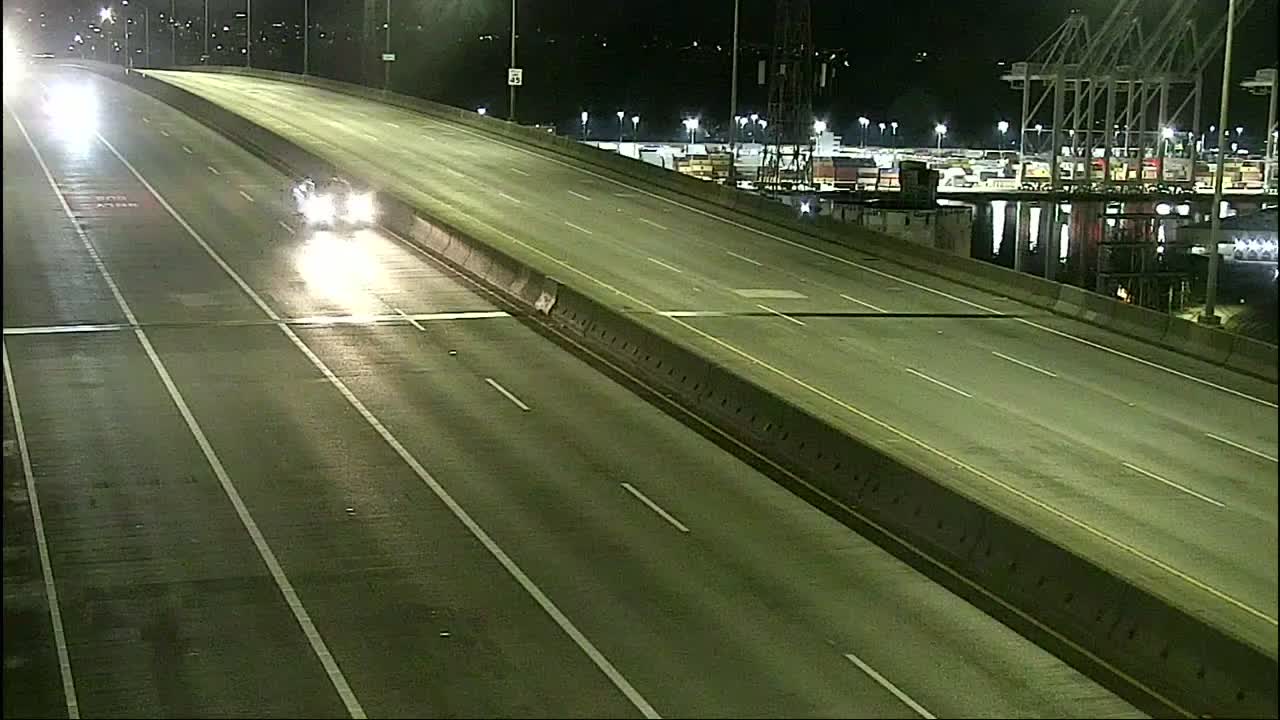
The new Highland Park Way/Holden signal is now in operation. Meantime, the low bridge is reserved for transit, freight, emergency response, and Harbor Island access – the city hopes you’ll honor that.
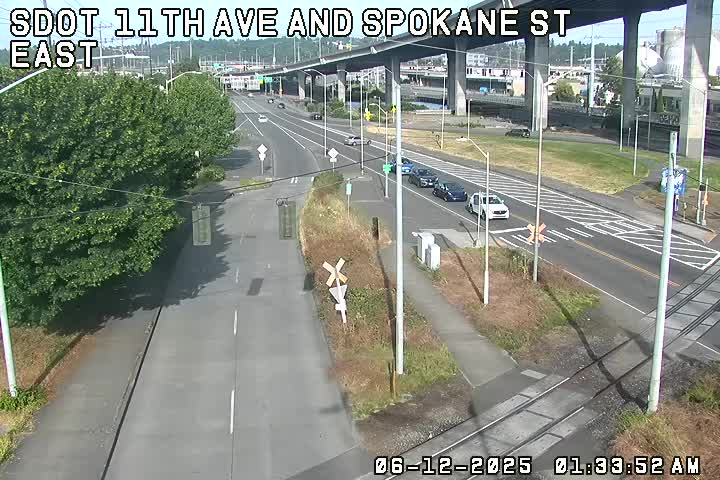
The main alternative across the Duwamish River is the 1st Avenue South Bridge (map) – that’s also the main route to I-5.
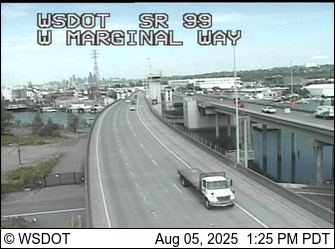
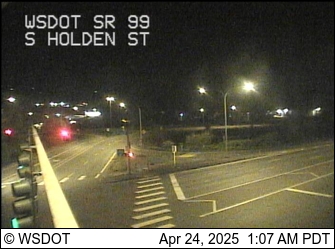
You also can cross the river via the South Park Bridge (map).
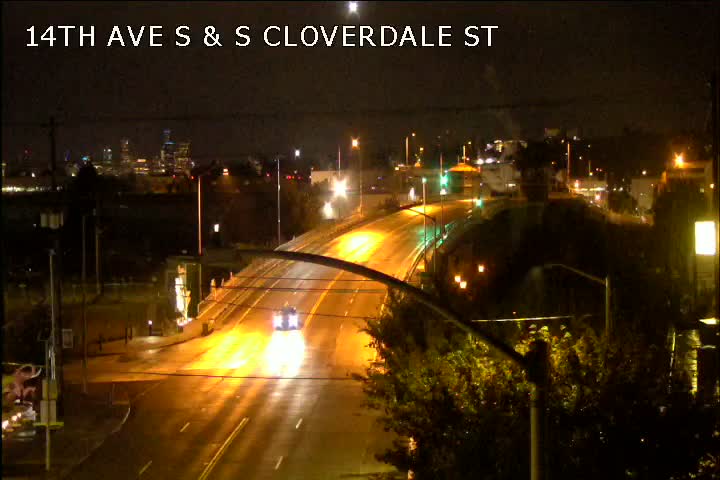
Check the @SDOTBridges Twitter feed to see if a bridge is opening for marine traffic.
Metro routes are affected, too – check yours here (the new Reduced Schedule also applies, plus Sound Transit is reducing the 560 schedule). Also on a reduced schedule now: Washington State Ferries‘ Fauntleroy-Vashon-Southworth route. Taking the Water Taxi? Here’s the schedule (the WT, like Metro, is currently free).
Let us know what you’re seeing on your alternate commute – comment, or text (not while at the wheel!) 206-293-6302.
| 6 COMMENTS